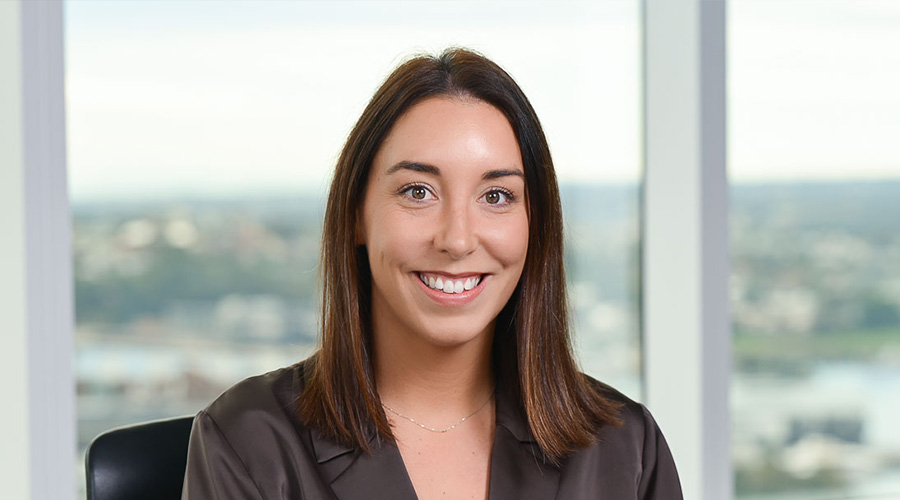Court of Appeal confirms anaesthetist liable for paraplegia
Mr Brendan Hobson, the respondent, suffered from a disorder which affected his ability to fill his lungs with air and, accordingly, restricted his breathing capacity. His prognosis was grave and corrective surgery in two stages was recommended. The first operation was successful, however, the second – on 17 November 2009 – was terminated before its intended conclusion. As a result of this second operation, the respondent became a paraplegic.
The respondent commenced proceedings against the hospital where the second operation took place and various members of the team who operated on him, alleging negligence in various respects.1 On 17 May 2017, Justice Harrison of the NSW Supreme Court delivered judgment against Dr Christopher Sparks, the principal anaesthetist and Dr Randolph Gray, the specialist orthopaedic/spine surgeon. It was held that Dr Gray and Dr Sparks breached their respective duties of care to the respondent and were liable in negligence in the amount of $3,828,075.
As against both doctors, the primary judge held that, in light of the adverse blood gas readings for carbon dioxide obtained in the course of the second operation, they ought to have caused the operation to be terminated earlier than they did. It was determined that had the operation been terminated at the earlier juncture, the respondent would not have suffered a significant cardio-vascular collapse such that his spine would not have been damaged and he would not have been rendered paraplegic.
For further background on the NSW Supreme Court proceedings see our past article here.
The Court of Appeal
Both doctors appealed against the liability and quantum findings of the primary judge.
On 1 March 2018, the majority of the Court of Appeal (Court) held that the liability of both doctors ought not be treated the same and determined that Dr Gray was not negligent in failing to prevent the incident which transpired. The Court dismissed Dr Sparks’ appeal with costs awarded against him.
Breach of Duty – Dr Sparks
The Court held that Dr Sparks made an unreasonable decision to ignore a serious and imminent intra-operative threat to the respondent’s health when he knew that the risk would be far less immediate if the surgery was prematurely terminated. The decision to allow the operation to continue for 30 minutes after Dr Sparks had, without success, sought help from experienced anaesthetists, involved more than an erroneous clinical judgment. The management of the ventilator and cardiovascular parameters were chiefly the responsibility of the attending anaesthetist, and so the Court held that Dr Sparks had breached his duty of care to the respondent.
No breach of duty – Dr Gray
The Court held that a surgeon is entitled to rely on the anaesthetist to inform them of any matter of concern in the anaesthetist area of practice. There was no evidence that Dr Gray ought to have made an inquiry as to the respondent’s carbon dioxide level and therefore he was not negligent in failing to direct the termination of the operation during the critical period. The Court highlighted that when Dr Sparks did advise of the need to terminate at approximately 9:25 pm, Dr Gray did so promptly.
Section 5O of the Civil Liability Act 2002 (NSW)
Dr Sparks appealed the decision to reject his defence under section 5O of the Civil Liability Act 2002 (NSW) (CLA) which relates to the standard of care of professionals. The section states that a professional will not be found negligent in relation to the provision of a professional service if it can be established that he/she acted in a manner that (at the time that the service was provided) was widely accepted (rather than universally accepted) in Australia by peer professional opinion as competent professional practice. However, this opinion cannot be relied upon if the court considers the opinion irrational.
The prior case of McKenna which considered Section 5O in some detail was discussed.2
In McKenna, the Court held that to establish a defence under section 5O, a medical practitioner needs to demonstrate that what he/she did conform with a practice that was in existence at the time the medical service was provided; and that the practice was widely (although not necessarily universally) accepted by peer professional opinion as competent professional practice. Dr Sparks submitted that if McKenna was to be followed, then his conduct in exercising judgment as to the time of cessation of the operation constituted a practice for the purpose of section 5O.
Noting that the High Court had reversed McKenna – without approving the reasoning with respect to section 5O – the Court held that this principle was not binding.3 Accordingly, while the discussion of scope and operation of section 5O in McKenna was not to be disregarded, there was no obligation on the Court to follow it.
The Court held that the evidence relied upon by Dr Sparks fell short of establishing a standard of competent professional practice which was widely accepted in Australia.
Section 5I – Inherent risks
Dr Sparks also appealed the first instance decision to reject his defence under section 5I of the CLA which provides that a person cannot be liable in negligence for harm to another as a result of the materialisation of an inherent risk. This refers to something that cannot be avoided by the exercise of reasonable care and skill.
The Court held that section 5I had no application in the present case. There was little doubt that if the operation had ceased at a point in time before the respondent suffered the cardio-vascular collapse, the risk in question would not have materialised (could have been avoided) and the harm would not have occurred.
For the above reasons, Dr Sparks was found liable in negligence to the plaintiff in the amount of $3,828,075. The appeals against quantum findings in respect of past domestic care, future domestic care and motor vehicle expenses were dismissed.
Conclusion
This decision highlights that when determining whether a breach of duty has occurred consideration must be given to what a person knew, or ought to have known at the time of the alleged breach – as it was for this reason that the principal surgeon was held to be not liable.
While the Court revisited the concept outlined in McKenna as to whether a Section 5O defence required that at the time of the alleged negligence, there was an established practice which was widely accepted as competent medical practice, it did not definitively determine the issue. Accordingly, the issue may ultimately need to be decided by the High Court in due course.
1Hobson v Northern Sydney Local Health District [2017] NSWSC 589
2McKenna v Hunter & New England Local Health District [2013] NSWCA 476;
3Hunter and New England Local Health District v McKenna (2014) 253 CLR 270
Contact
Holly Turner
Senior Associate
Holly is an experienced litigation lawyer and insurance specialist.
Related practices
You might be also interested in...

Insurance | 22 Jan 2018
WA Insurance Round-Up – Issue 5
The District Court of Western Australia has dismissed an appeal by a worker against a decision of the WorkCover Arbitration Service, dismissing his application for additional workers’ compensation entitlements.

Medical Defence | 26 Apr 2018
Labour Hire Licensing Act 2017 – integrity in the labour hire industry
In September 2017, the Queensland government passed the Labour Hire Licensing Act. Comparable legislation has been passed in South Australia (commencing 1 March 2018) and is before parliament in Victoria (yet to be passed) which is similar but not identical. The Act covers all operations within Queensland, including labour hire providers and hosts who may be based interstate or overseas but have business in Queensland.



